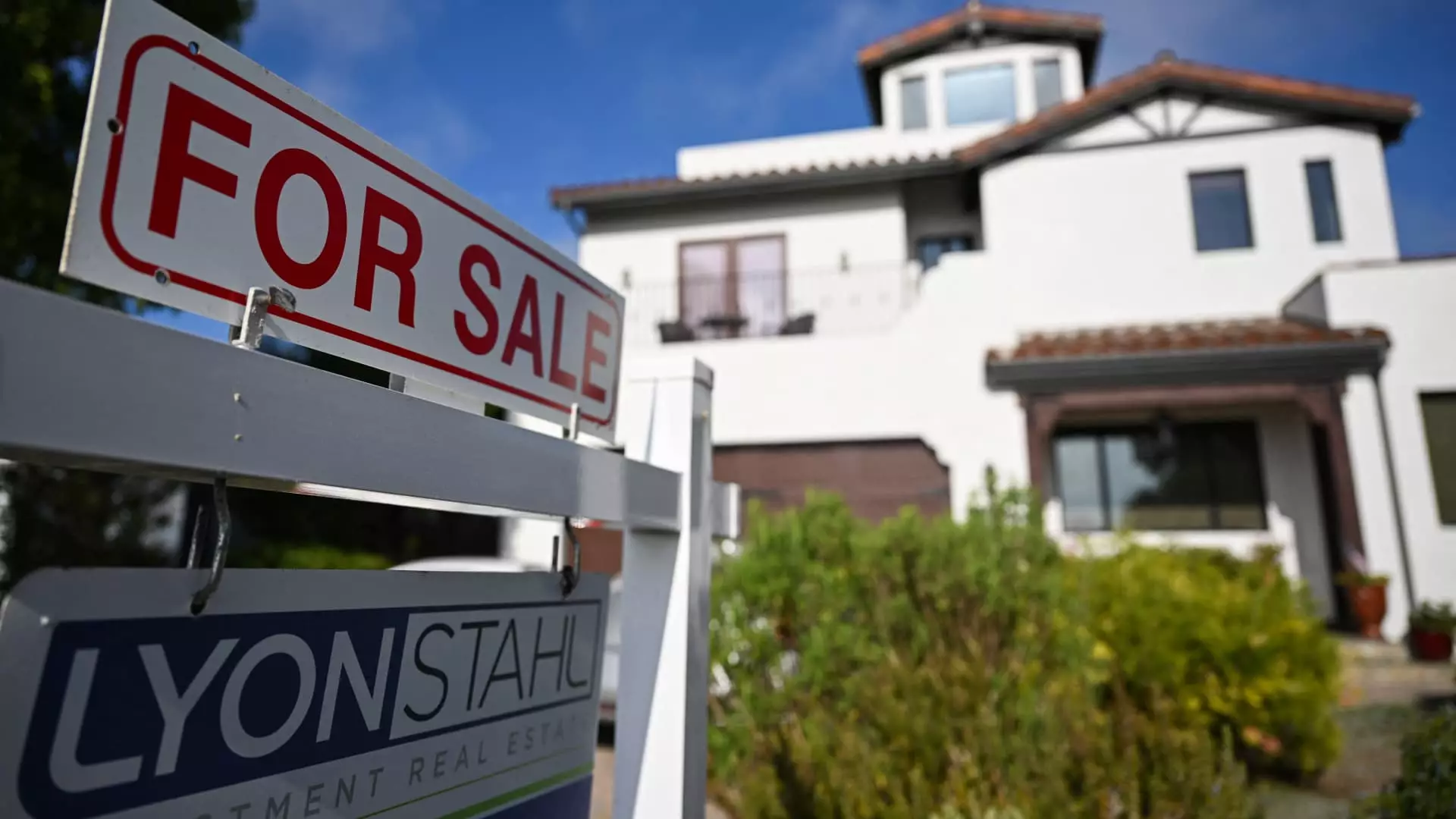In an unexpected turn of events, mortgage rates took an astonishing tumble of 12 basis points, settling at an average of 6.63%. This decline marks the lowest level for the popular 30-year fixed loan since October of the previous year. Yet, while it might seem like a silver lining in an otherwise clouded housing market, the reality is much more complicated. Factors surrounding this shifting financial landscape reveal a starkly contrasting narrative: one where affordability remains elusive for a considerable portion of the population.
The catalyst for this drop was the Trump administration’s tariff announcement, which sent shockwaves through the stock market. Investors, in a mad dash for safety, flocked to bonds—an action that ultimately led to the loosening of mortgage rates. Matthew Graham, chief operating officer at Mortgage News Daily, opined on the uncertain ramifications of the policy change, emphasizing that while rates might drop, underlying tensions in global trade remain glaring.
Record-High Payments Stifle Opportunities
Despite the dip in rates arriving at a generally favorable moment as the housing market typically heats up during spring, key indicators suggest that the burden on homebuyers is far greater than one might assume. For the four-week period concluding on March 30, the average monthly mortgage payment soared to an astounding $2,802. This represents a record high and is indicative of a troubling trend in home affordability. Compounding this issue, sale prices have risen by 3.4% year-over-year.
Prospective buyers may find marginally lower rates appealing, but the harsh reality is that about 70% of U.S. households—translating to a staggering 94 million people—cannot afford a home priced at $400,000. Predictions indicate that by 2025, the estimated median price of new homes will be around $460,000. Such figures highlight a challenging environment where homeownership increasingly feels like an unattainable dream for a vast segment of the population.
Further deepening the crisis, analysis from the National Association of Home Builders reveals that securing a $200,000 home at a 6.5% mortgage rate necessitates a minimum annual income of approximately $61,487, a threshold that will exclude millions of households from potential homeownership.
The Supply-Demand Imbalance
The recent uptick in housing supply provides a glimmer of hope. Agents report that more individuals are contemplating listing their properties; however, the available homes are predominantly situated in higher price ranges, further alienating low- and middle-income buyers. Chronic underbuilding since the Great Recession has exacerbated this supply issue, leaving the housing market perennially constricted and misaligned with genuine buyer demand.
Matt Ferris, a Redfin agent in Northern Virginia, noted a rise in home listings, attributing it to sellers wanting to maximize their profits or relocating closer to urban centers as remote work policies shift. Yet the bigger picture remains grim: despite a 10% annual increase in new listings for March and a 28% year-over-year increase in active listings, homes are lingering on the market longer than usual, with rising instances of price reductions.
Additionally, pending sales—contracts signed for existing homes—plummeted by 5.2% compared to last March within major metropolitan areas. Markets such as Jacksonville and Miami experienced declines of over 15%, hinting at a cooling trend driven in part by reverse pandemic migration.
Beneath the Surface: A Reshaping Housing Landscape
Current events are shaping a market that appears to be recalibrating itself, one that may offer prospective homebuyers an expanded selection of homes, albeit without assurance of affordability or suitability. Chief economist for Realtor.com, Danielle Hale, aptly noted that the high costs associated with home buying, coupled with rising economic concerns, signal a sluggish response from buyers amidst early spring.
It is crucial to recognize that this landscape represents a complex interplay of factors—interest rates, housing supply, and economic viability. A balanced assessment must consider that while lower mortgage rates seem advantageous, the broader picture reveals a market deeply entrenched in uncertainty and systemic challenges. The current climate calls not just for individuals to adapt as buyers, but for a concerted effort to rethink the policies that govern housing and economic equity in America.
As the spring season unfolds, the rise in listings might present a different kind of opportunity, one found not merely in the numbers but in the larger ideological movement toward a more inclusive and affordable housing market. The real challenge lies not just in navigating interest rate fluctuations, but in ensuring that all Americans have viable paths toward homeownership, instead of simply becoming witnesses to a narrowing economic divide.

